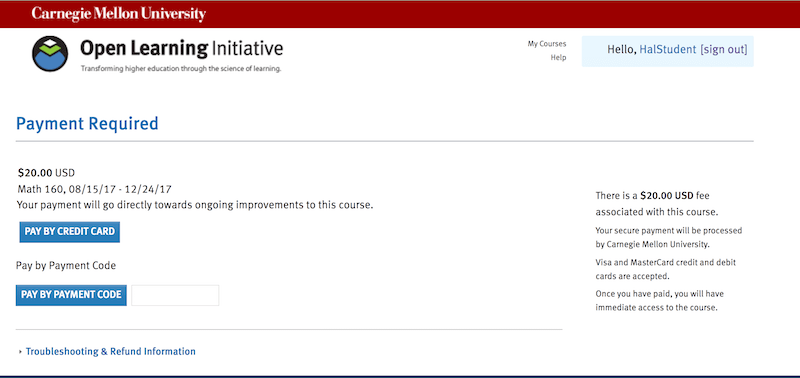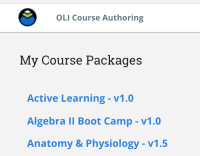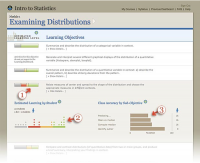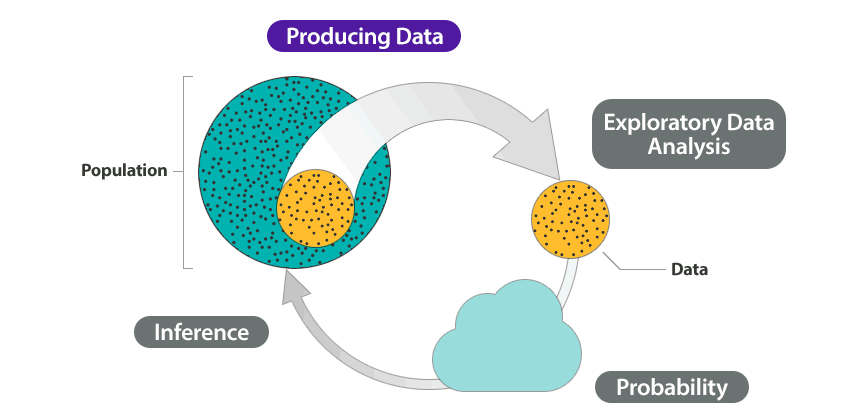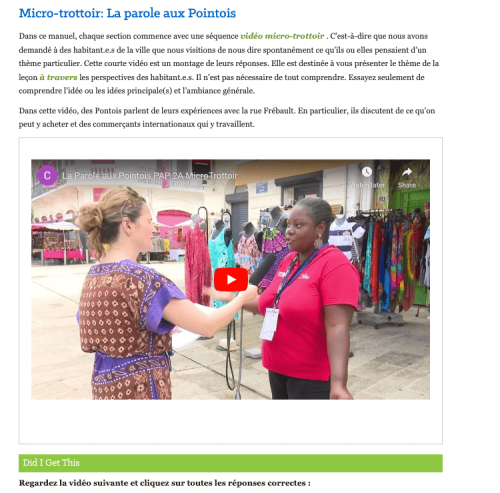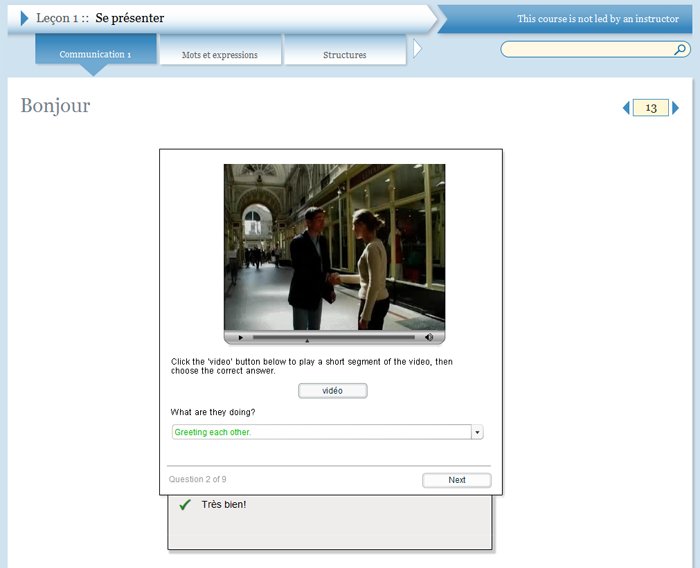The second of two semesters on Mandarin Chinese that comprise CMU’s full Elementary Chinese course. Click here for Elementary Chinese 1.
Elementary Chinese 2
$25
- Description
- What students will learn
- Learning objectives by module
- Course assessments, activities, and outline
- Other course details
- System requirements
- Included instructor tools
Description
Elementary Chinese 2 picks up where Elementary Chinese 1 finished, and aims to help beginners develop communicative competence in the basic four skills (listening, speaking, reading and writing) and culture of Chinese. The course curriculum is organized around the 5 Cs principles of the National Standards for Foreign Language Education for the 21st Century – Communication, Cultures, Comparisons, Connections and Communities. Elementary Chinese 2 covers 10 units. We recommend that students go through the units in order to take advantage of the systematic scope and sequence of the learning materials. However, the curriculum is also flexible for individuals and institutions to adopt and modify to meet their different needs, schedule and emphasis. The current course is available for low-cost use by instructor-led classes of enrolled students.
Note: the Open & Free Chinese 2 course includes just one sample lesson, Unit 2: Greetings.
Topics Covered:
- Invitations
- Making Requests
- Restaurant
- Shopping
- Showing People Around
- Hobbies and Sports
- Travel Plans
- An Illness
- Renting an Apartment
- Future Plans
Course structure
Elementary Chinese 2 is the second half of a two-part sequence. The units in both courses have a consistent structure, containing the following main content and activities:
Main Content
- Objective
- Main video (+questions)
- Video preview exercises
- Text of the video
- Text translation and pinyin with slower audio (students are strongly encouraged to listen and repeat after the sound files)
- Text notes
- Vocabulary tables
- Video comprehension exercises
II. Listening
- Pinyin recognition exercise
- True and false exercise
- Translation exercise
- Question answering exercise
III. Grammar
- Grammar notes
- Sentence jumble exercise
- Dialogue jumble exercise
IV. Reading Exercises
- Reading comprehension
V. Consolidation Exercises
- Picture description exercise
VI. Culture Link
- Culture notes
- Culture info
VII Characters
- Characters in the character book (both traditional and simplified versions)
What students will learn
By the time they finish this course, students will have:
- developed communicative competence in the basic four skills: listening, speaking, reading, and writing
- an introduction to Chinese culture
Learning objectives by module
Not applicable.
Course assessments, activities, and outline
UNIT 1: Invitations
Module 1: Main Content
Module 2: Listening
Module 3: Grammar
Module 4: Reading Exercises
Module 5: Consolidation Exercises
Module 6: Culture Link
Module 7: Unit test
UNIT 2: Making Requests
Module 8: Main Content
Module 9: Listening
Module 10: Grammar
Module 11: Reading Exercises
Module 12: Consolidation Exercises
Module 13: Culture Link
Module 14: Unit test
UNIT 3: Restaurant
Module 15: Main Content
Module 16: Listening
Module 17: Grammar
Module 18: Reading Exercises
Module 19: Consolidation Exercises
Module 20: Culture Link
Module 21: Unit test
UNIT 4: Shopping
Module 22: Main Content
Module 23: Listening
Module 24: Grammar
Module 25: Reading Exercises
Module 26: Consolidation Exercises
Module 27: Culture Link
Module 28: Unit test
UNIT 5: Showing People Around
Module 29: Main Content
Module 30: Listening
Module 31: Grammar
Module 32: Reading Exercises
Module 33: Consolidation Exercises
Module 34: Culture Link
Module 35: Unit test
UNIT 6: Hobbies and Sports
Module 36: Main Content
Module 37: Listening
Module 38: Grammar
Module 39: Reading Exercises
Module 40: Consolidation Exercises
Module 41: Culture Link
Module 42: Unit test
UNIT 7: Travel Plans
Module 43: Main Content
Module 44: Listening
Module 45: Grammar
Module 46: Reading Exercises
Module 47: Consolidation Exercises
Module 48: Culture Link
Module 49: Unit test
UNIT 8: An Illness
Module 50: Main Content
Module 51: Listening
Module 52: Grammar
Module 53: Consolidation Exercises
Module 54: Culture Link
Module 55: Unit test
UNIT 9: Renting an Apartment
Module 56: Main Content
Module 57: Listening
Module 58: Grammar
Module 59: Reading Exercises
Module 60: Consolidation Exercises
Module 61: Culture Link
Module 62: Unit test
UNIT 10: Future Plans
Module 63: Main Content
Module 64: Listening
Module 65: Grammar
Module 66: Reading Exercises
Module 67: Consolidation Exercises
Module 68: Culture Link
Module 69: Unit test
Other course details
System requirements
OLI system requirements, regardless of course:
- internet access
- an operating system that supports the latest browser update
- the latest browser update (Chrome recommended; Firefox, Safari supported; Edge and Internet Explorer are supported but not recommended)
- pop-ups enabled
- cookies enabled
Some courses include exercises with exceptions to these requirements, such as technology that cannot be used on mobile devices.
This course’s system requirements:
- Audio-recording software
Included instructor tools
Instructors who teach with OLI courses benefit from a suite of free tools, technologies, and pedagogical approaches. Together they equip teachers with insights into real-time student learning states; they provide more effective instruction in less time; and they’ve been proven to boost student success.




